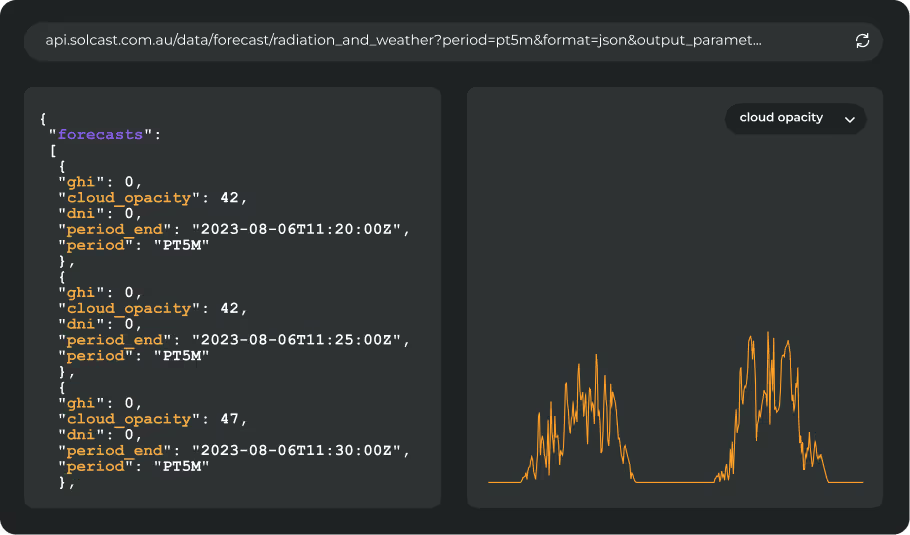This winter brought dry and warm conditions to most of South America, resulting in higher-than-normal irradiance across the continent. The conditions have been particularly dry in the Amazon basin, favouring wildfire activity, and the resulting smoke has reduced solar irradiance along the plume’s path.
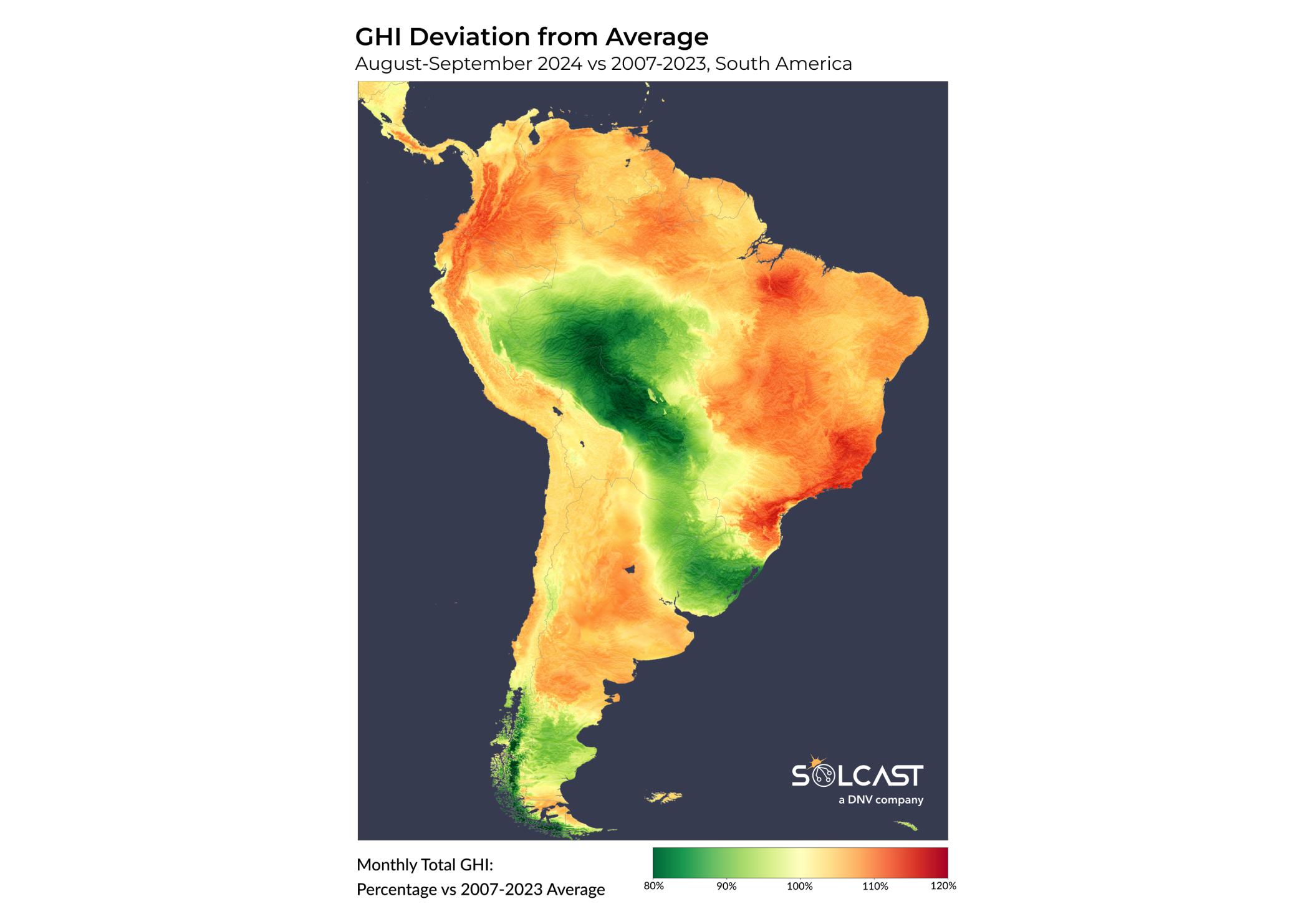
In August and September, many areas experienced significant increases in irradiance. Eastern and northern Brazil, Ecuador, Colombia, as well as states along the Caribbean Sea, Chile, and Argentina, saw irradiance levels over 20% higher than climatological averages. These conditions were driven by clear skies and favourable atmospheric patterns, boosting solar generation in regions unaffected by smoke or haze.
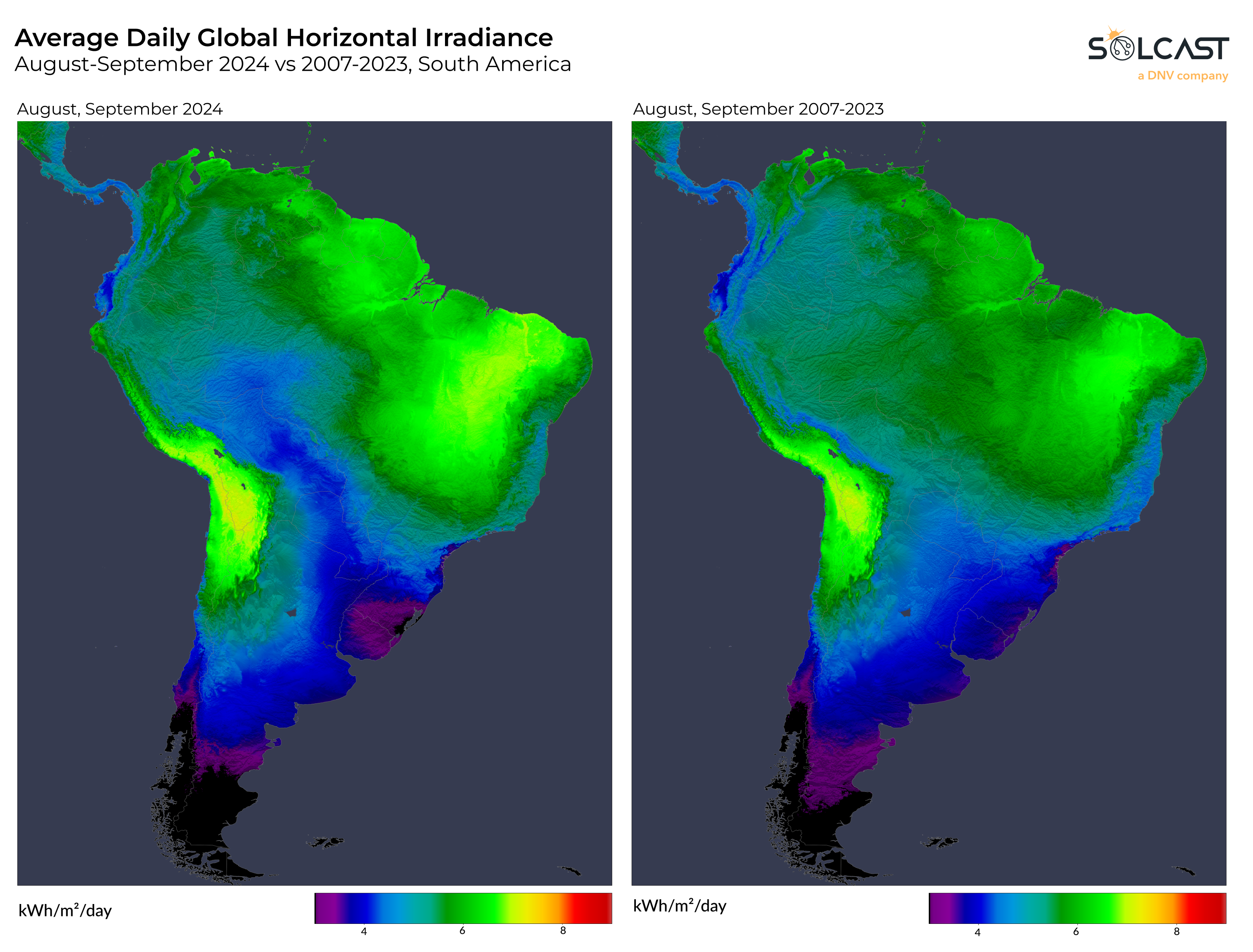
On the other hand, the Amazon basin continued to suffer from an extended winter drought, which exacerbated the frequency and intensity of wildfires. As smoke was carried across the continent with the prevailing westerly winds, irradiance levels dropped sharply in regions bordering the Amazon basin all the way to Southern Brazil and Uruguay, with some areas experiencing up to a 20% reduction in solar irradiance. This trend mirrors conditions from last winter, when similarly dry conditions led to elevated wildfire activity and widespread smoke plumes.
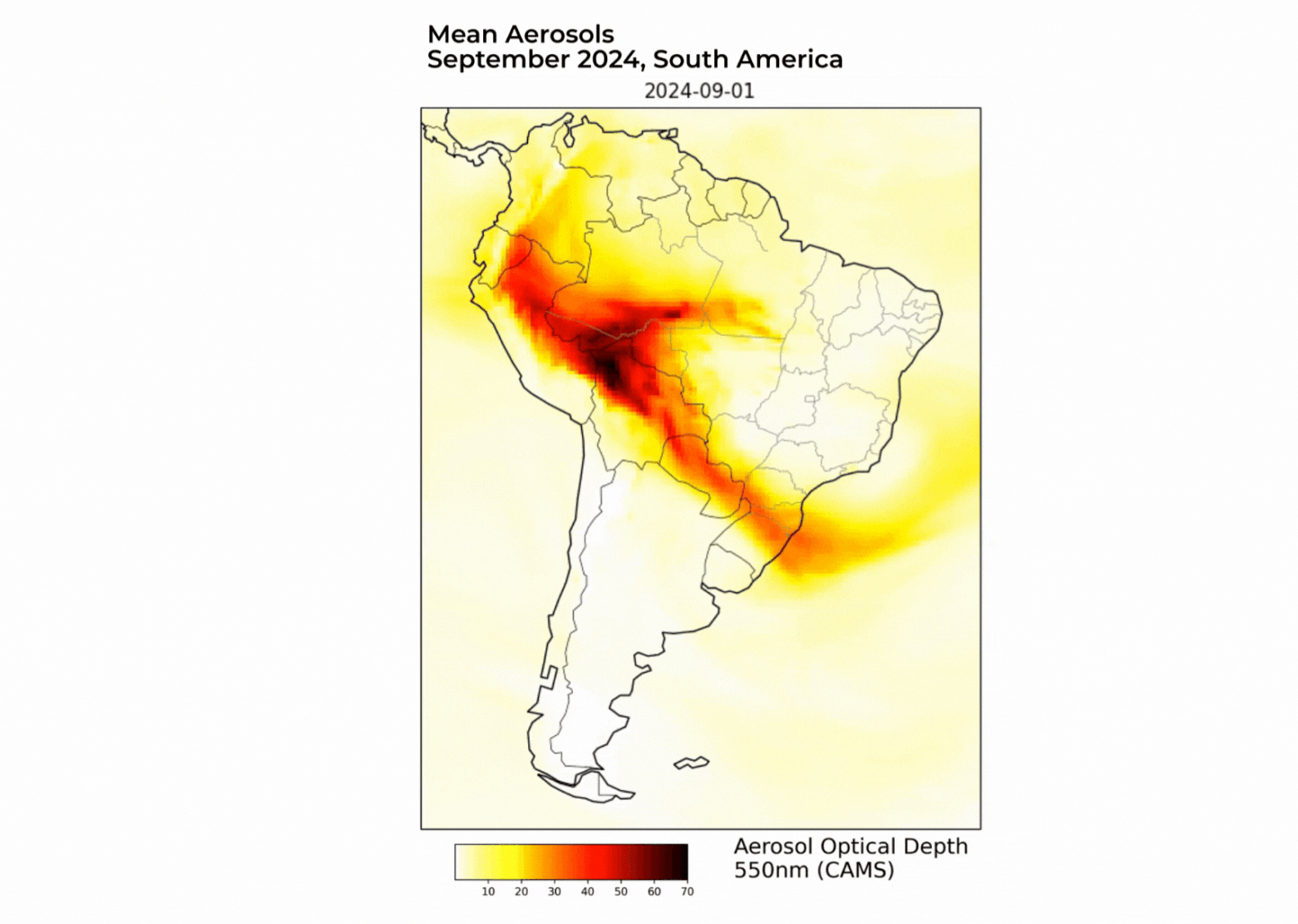
Data from the Copernicus Atmosphere Monitoring Service (CAMS) confirms the alignment of aerosol concentrations with the negative anomalies observed in Solcast data.
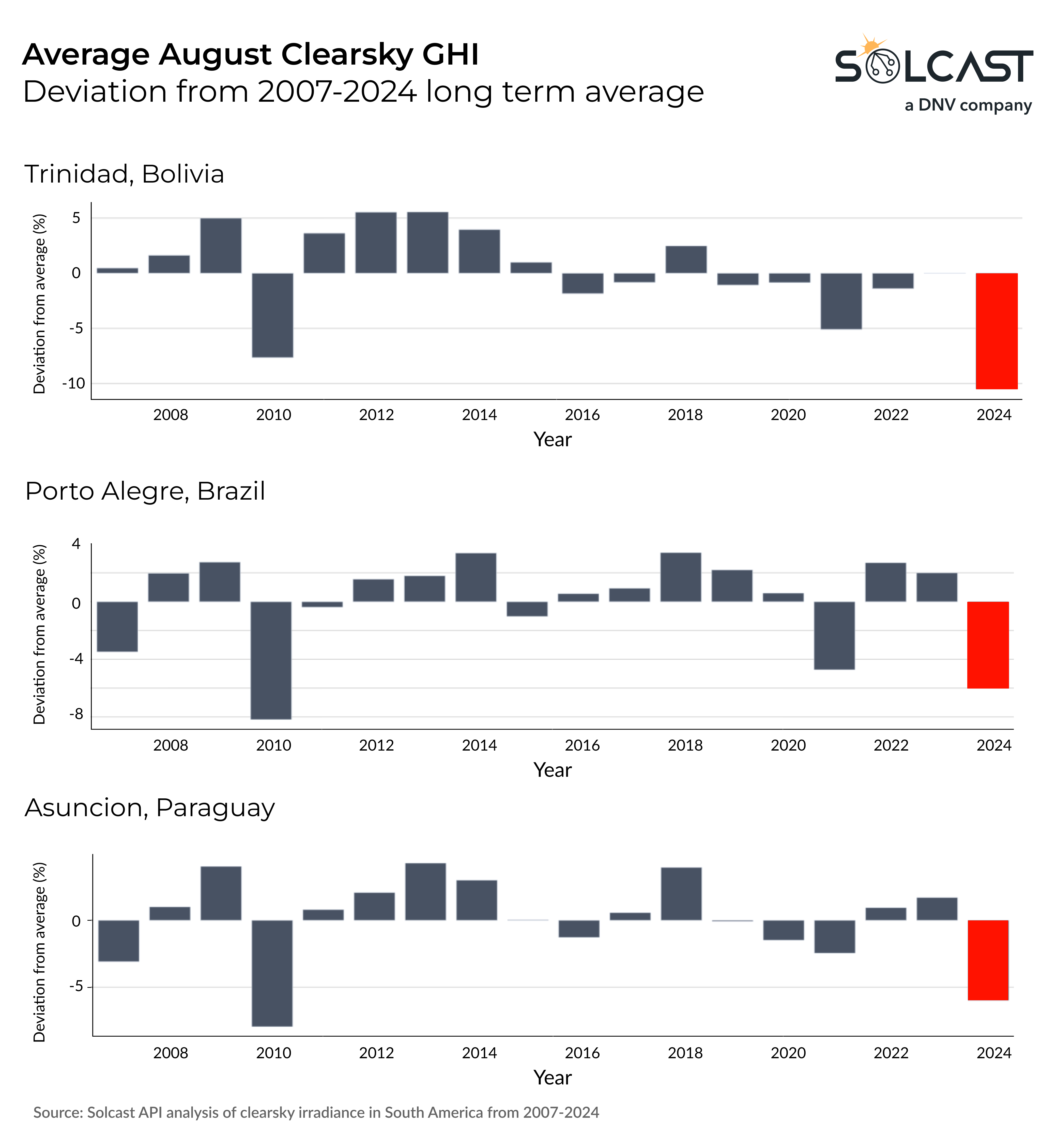
Closer to the Amazon, in Trinidad, Bolivia, irradiance levels fell by more than 10% compared to historical average. Porto Alegre and Asuncion, cities located far from the Amazon fires but along the path of the smoke, were also affected with clear-sky irradiance of 6% and more than 5% lower than its August average, respectively.
As well as in the Amazon, California and Canada have also been seeing multiple large scale, record breaking wildfires over the past 18 months. This is changing the game for how weather models use and understand impacts aerosols have on irradiance, making it more important to use dynamic, high resolution data inputs rather than relying on long term climatological data as conditions are changing.
Track weather conditions, cloud movements, and irradiance-influencing factors that impact your solar generation. Access bankable actuals and accurate forecasts when you sign up for a Solcast API toolkit. You can reach out to our team for an extended trial.








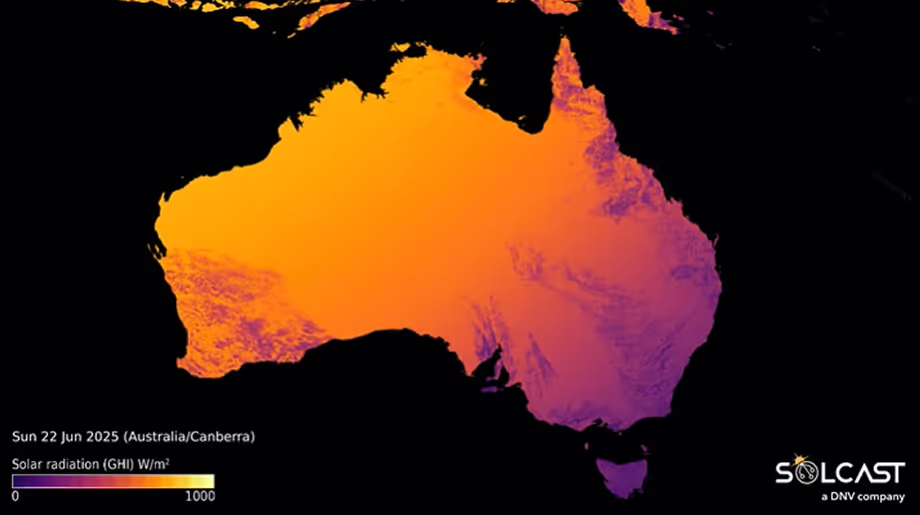
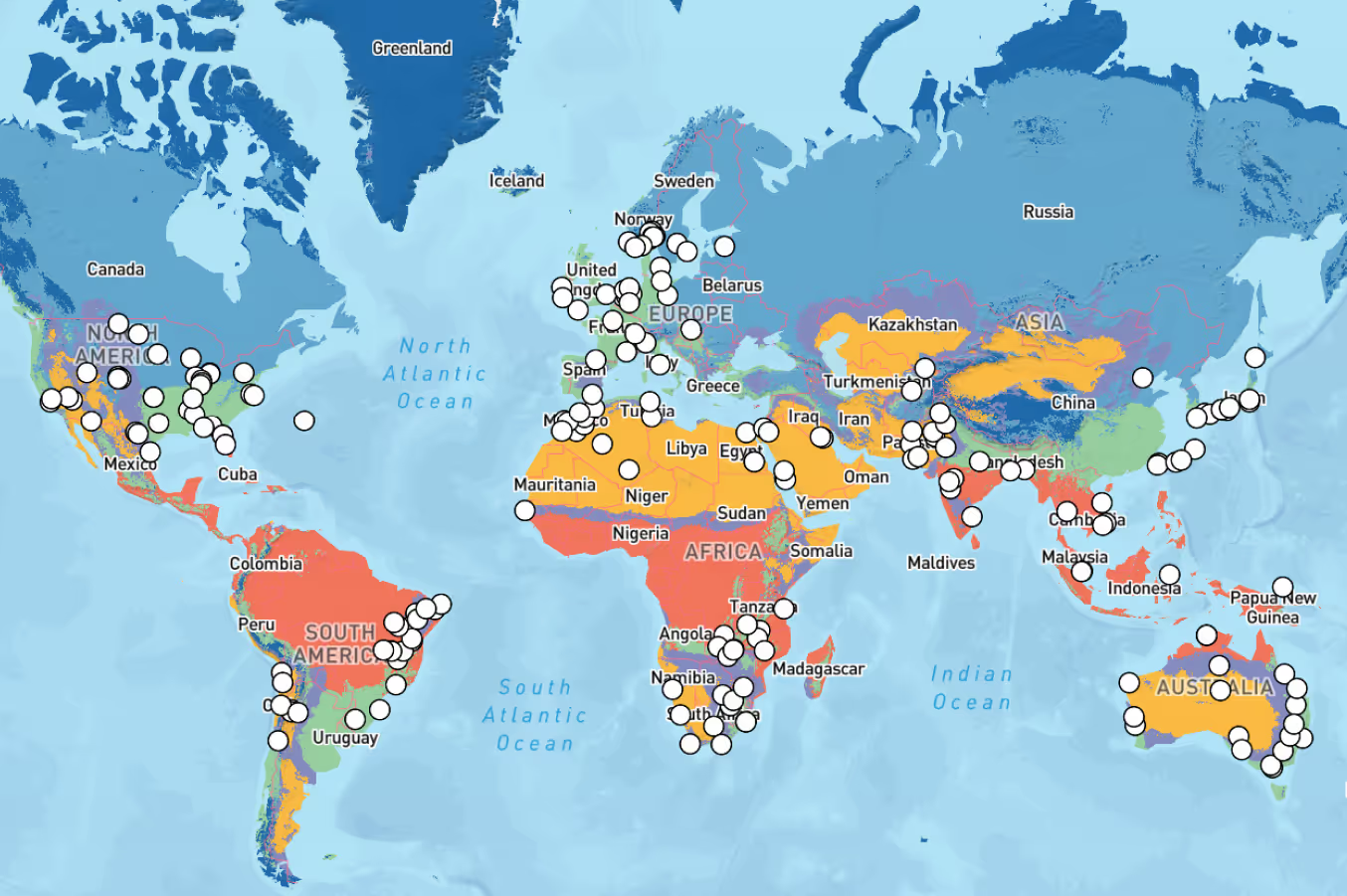
.avif)
